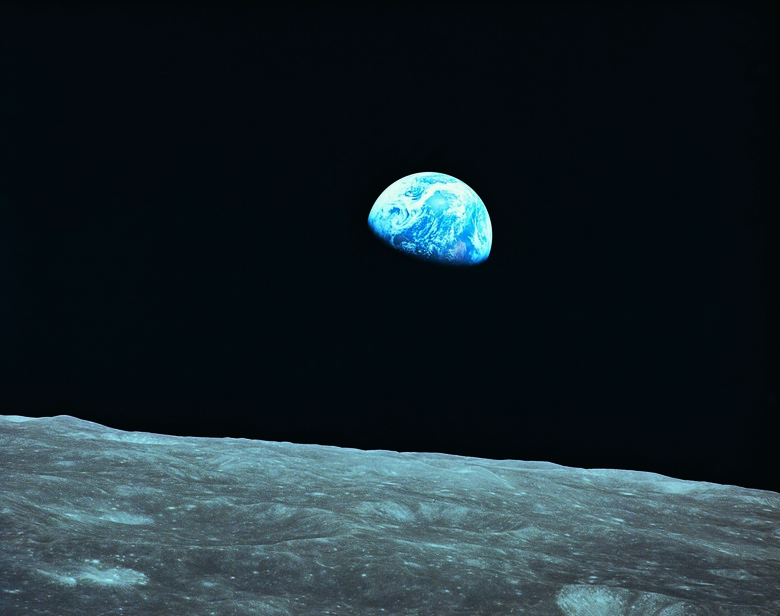What Covers The Moon At Night
If you had the same views of the Earth and moon as the Voyager 1 spacecraft had of Saturn when it flew by the ringed planet in 1980, you would see the two familiar orbs casting dramatic shadows. To an observer within one of these shadows, the planet appears dark. As the moon orbits the Earth, the amount that is in shadow changes constantly. There's nothing physically covering it; the darkness is a result of your vantage point.
Day and Night
Day and Night
Each body in the solar system has a day and night side. To a suitably placed observer, the day side shines with the reflected light of the sun, while the night side is in shadow and invisible; a line separates these two halves of the body. Observers on Earth can see the shadows of the three large bodies that pass between this planet and the sun: Mercury, Venus and the moon. All the planets and moons beyond Earth's orbit, on the other hand, always appear full, unless you happen to observe one being eclipsed by another.
Full Moon and New Moon
Full Moon and New Moon
The line that divides day and night on the moon is a straight one, and the fact that one-half of the moon is in light while the other half is in darkness never changes. What does change is the orientation of the moon with respect to the Earth and the sun. When the moon is beyond Earth's orbit and in a direct line with the sun, it appears full, just as all the extraterrestrial planets do. When it is exactly between the Earth and the sun, on the other hand, you only see the shadow of the new moon.
The Phases of the Moon
The Phases of the Moon
As the new moon gradually becomes full, you can observe it gradually grow lighter, progressing from waxing crescent to first quarter to waxing gibbous to full. The amount of light you observe on any given night is a result of the angular relationship between the sun, moon and Earth. Analogously, as the moon continues in its orbit, you can observe the shadow increase as it progresses through waning gibbous, third quarter and waning crescent until it is once again new. There's nothing covering the shadow — it is simply that part of the moon on which the sun isn't shining.
The Phases of Venus
The Phases of Venus
The inferior planets — Mercury and Venus — also exhibit phases, but because these planets appear so small, no one knew about these phases until astronomers could observe them with telescopes. When Venus is on the same side of the sun as the Earth, it gradually becomes a crescent, disappears and then reappears. Because Venus is close when this happens, it is also bright, and this phenomenon led the ancients to believe that it was two stars. They called the waning Venus Hesperos, the evening star because it appears when the sun is setting. The waxing Venus, which rises just before the sun, was Phosphoros, the morning star.
References
Cite This Article
MLA
Deziel, Chris. "What Covers The Moon At Night" sciencing.com, https://www.sciencing.com/covers-moon-night-4803/. 13 March 2018.
APA
Deziel, Chris. (2018, March 13). What Covers The Moon At Night. sciencing.com. Retrieved from https://www.sciencing.com/covers-moon-night-4803/
Chicago
Deziel, Chris. What Covers The Moon At Night last modified March 24, 2022. https://www.sciencing.com/covers-moon-night-4803/
